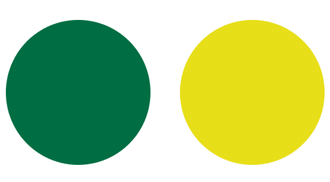
This week, we took a glimpse into Neustar’s vast data maw and, in doing so, looked directly into consumers’ souls. Well, nearly.
Everyone knows that the digital 1s and 0s at a marketer’s disposal is almost infinite. The problem isn’t getting enough data, it’s getting the right insights from that data. One way to do that is to overlap different data sets to pinpoint true marketing opportunities.
We did just that. Here’s what we found, illustrated in handy Venn Diagrams.
Life in the HOV lane
Who they are: Neustar’s consumer data showed that these body-conscious, type-A have-it-all’ers are, among other things, big Diet Coke drinkers: they roll large in luxury SUVs — preferring the Mercedes G-Class, Lexus Gx 470 and the BMW X5, — and clean out retailers like Ann Taylor, Brooks Brothers and Babies”R”Us.
What it means: These are affluent people with little time for your brand message; they fast-forward through your television ads. In fact, our data shows these consumers are likely to leave the room during ads. Don’t try to sell them on Diet Coke in 30 second prime-time spots. Instead, brands should reach them with video ads at the gym or with direct and to-the-point search results.
Tosh.0 is my spirit animal
Who they are: In addition to snowboarding, these extreme sportsbros love Atlantic City, hip-hop and fantasy football. And they’re probably managing their lives on at least one mobile device.
What it means: This group spends fast and early on technology: they buy new technology without hesitation and lead their friends in the gadget race. Forget Mountain Dew — it’s Samsung that should be handing out free swag at the X-Games.
Smackdowns in the suburbs
Who they are: These occasional yogis and devout recyclers — 20 percent higher than others, on average — are also in charge of the household shopping. And, they’re most likely to whip out their American Express card when picking up the toilet paper.
What it means: Curiously, at the intersection of this very practical trifecta sits an unlikely warrior: peek under the Lululemon hoodie, and you’ll find a TV viewer who enjoys blood sports like boxing and the full-throttle pace of the NBA post-season.
Kleenex is tops with this set – and targeting these athletic women with messaging that moves beyond the usually touchy-feely or fashion-forward is a sure bet. After all, Kleenex is good for nosebleeds, too.
Couch parents seek escape plan
Who they are: Not every couch potato is a lazy ne’er do well. Some, like those sitting at this demographic intersection, are just new parents. Neustar data shows that Netflix power-watchers are more likely to have had a baby in the last 12 months (or have one on the way). Without much time for themselves, they subsist on quick-fix meals and take-out.
What it means: It’s no surprise that these power-watchers are second-screening during Archer marathons. Often on the New York Times website, clearly these consumers are thirsty for more than just baby formula spots and Pampers ads. When the kid’s finally asleep, they’re also surfing Movietickets.com, TripAdvisor.com and JetBlue.com.
How many years ‘til that kid leaves for college?
More from Digiday

Media buyers say Yahoo’s DSP is one to watch
Yahoo’s DSP has momentum, but Amazon’s aggressive expansion is keeping it in challenger mode

Retail leaders at Target, Lowe’s and more on the AI investments they’re plotting for 2026
Anywhere from 33% to 83% of respondents used AI to do their holiday shopping in 2025.

Why cookware brand HexClad is sitting out of the Super Bowl for a broader field
With Super Bowl ad costs hitting $8 million, brands like HexClad are pivoting to streaming and other sports stages for a better marketing bet.





